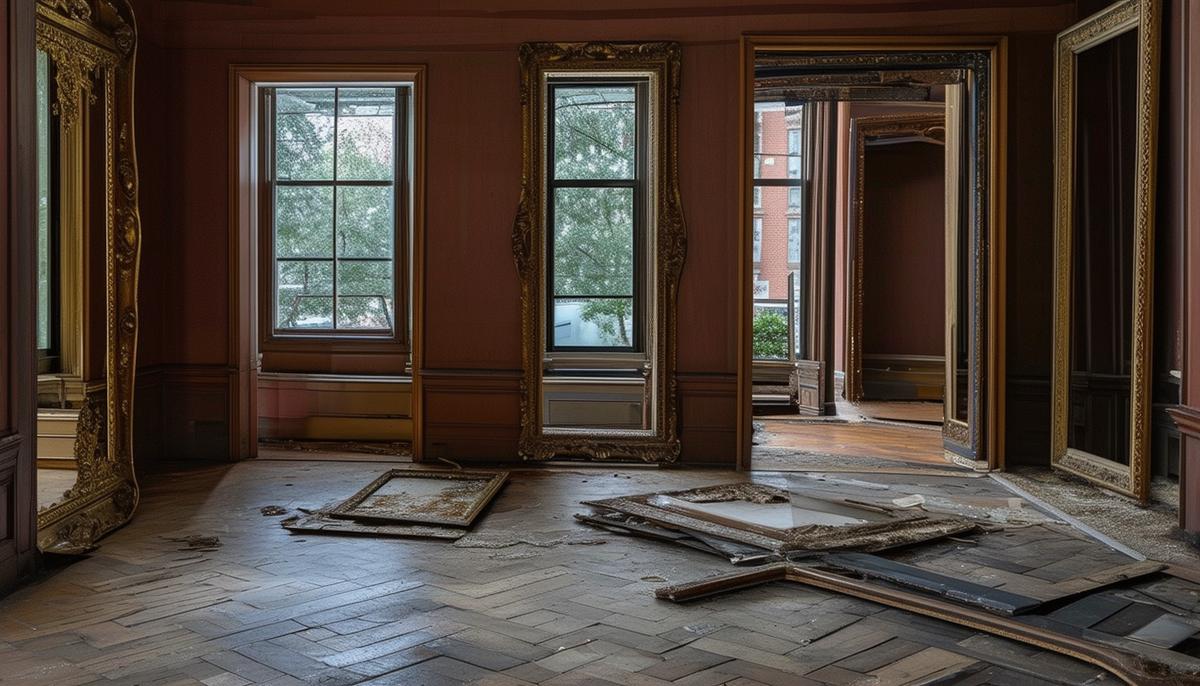High-Profile Art Heists
The Isabella Stewart Gardner Museum heist, remarkable for its audacity, unfolded in the early hours of March 18, 1990. Disguised as police officers, the thieves gained entry by citing a bogus disturbance call. Once inside, they swiftly overpowered the guards and absconded with thirteen masterpieces valued at around half a billion dollars. Despite exhaustive investigations and substantial rewards, none of the artworks, including Vermeer's priceless The Concert, have been recovered.
In another high-profile case, Edvard Munch's iconic work The Scream was stolen from Norway's National Gallery on February 12, 1994. Masked men entered through broken windows and left a mocking thank-you note to the lax security. The painting was later recovered in a daring sting operation, exposing vulnerabilities in museum security protocols.
More recently, Willem de Kooning's Woman-Ochre, stolen from the University of Arizona Museum of Art in 1985, resurfaced at an estate sale in 2017. Priced at a mere $2,000, a far cry from its estimated value of over $100 million, the painting's surprising reemergence raised questions about the seemingly ordinary nature of its keepers.
These episodes highlight the audacity of art thieves, the architectural gaps they exploit, and the lasting impact on galleries and admirers alike. The intertwining narratives of daring heists and artistic fascination continue to captivate, leaving indelible marks on the pages of art history.

Unsolved Mysteries in Art Theft
The recovery of Caravaggio's Nativity with St. Francis and St. Lawrence remains an unsolved mystery. Stolen in 1969 from the Oratory of San Lorenzo in Palermo, the painting's disappearance has cast a shadow over Italian art history. Speculation about Mafia involvement and potential mutilation of the artwork has only intensified the desire for its return among art custodians and historians.
Similarly, the wartime disappearance of Franz Marc's The Tower of Blue Horses has left a void in the world of German Expressionism. Last seen before World War II, its vanishing has deeply affected art conservationists. As historical intrigue deepens, these missing pieces transcend their material value, becoming symbols of cultural loss.
The ramifications of art theft extend far beyond financial considerations. The disappearance of artworks into the black market distorts provenance and hinders public appreciation. Recovery efforts face legal challenges, spurious claims, and the complexities of the illicit art trade.
These still-missing masterpieces underscore the tangible void left by their absence, impacting educational spheres and cultural heritage. As time passes, the quest for their return remains a shared hope among art communities worldwide, united in their vigilance against the shadow of theft.

Impact of Art Thefts on Security and Law
The shocking breaches exposed by major art thefts have spurred significant advancements in museum security practices and legal frameworks worldwide. Each stolen artwork serves as a catalyst for discussions on prevention and punishment.
Modern museums now employ state-of-the-art security measures, including:
- Motion detectors
- High-resolution CCTV cameras
- Advanced alarm systems linked to law enforcement
- Rigorous access controls
Elite institutions even utilize infrared sensors and customized protocols to safeguard their collections. Collaborative efforts, such as sharing blacklists of suspicious visitors, have become essential in combating art crime on a global scale. Databases like the Art Loss Register play a vital role in tracking ownership, theft, and authenticity, aiming to impede the illicit trade of stolen art.
Art thefts have also prompted notable changes in legal frameworks. National legislations have been strengthened to impose harsher penalties for art-related crimes, while international treaties aim to streamline repatriation processes and enforce stringent export checks. Laws under the umbrella of UNESCO conventions provide a robust defense against outright theft and the knowing possession or trade of unprovenanced artworks.
Insurance policies have evolved to become more precise in assessing risks and linking premiums to the level of security provided by insured venues. Policies now often include "swift feet" provisions, ensuring prompt deployment of recovery efforts in the event of theft.
While art thefts remain a foreboding threat, they have also catalyzed the development of sophisticated security measures and legal frameworks designed to deter and respond to such crimes. Galleries and museums continue to adapt and strengthen their defenses, working tirelessly to protect the invaluable cultural treasures entrusted to their care.

Psychology and Motivations Behind Art Thefts
The complex motivations and psychological profiles of art thieves reveal a terrain of unexpected drives and peculiar traits. While financial gain is often a significant factor, many art thieves are driven by more than mere monetary aspirations.
Psychologists and behavioral analysts have observed that many art thieves possess intellectual or scholarly inclinations rather than fitting the mold of hardened criminals. Their misdeeds often stem from a connoisseur's affection or a desire to overcome the perceived elitism of the art world. Some justify their actions as reclaiming exercises or statements against the status quo, seeking validation and a sense of redemption.
In some cases, cognitive misalignments lead individuals to view themselves as art savants destined to rescue artifacts from perceived inadequate custodianship or disrespectful displays. These disturbed individuals may construct narratives of cultural resurrection or heroic missions to reshape public discourse.
Narcissistic tendencies also play a significant role in many art thefts. The meticulous planning, crowd manipulation, and audacious execution of heists provide a rush of adrenaline and a sense of superiority for these individuals. They revel in the attention and infamy their actions generate, feeding their egos and fueling a dangerous addiction to the thrill of the crime.
Art theft, therefore, often occupies a complex precipice where societal critique, egoistical exploration, and criminal masterminding intersect. Each stolen piece becomes a symbol of broader cultural and psychological undercurrents, challenging the boundaries of legality and ethics.
Understanding the motivations behind art theft requires a deep exploration of the psyche, recognizing the diverse and often contradictory factors that drive individuals to commit these audacious crimes. By unraveling these psychological complexities, we can better comprehend the persistent allure of art theft and develop strategies to safeguard our shared cultural heritage.

The persistent shadow cast by stolen masterpieces represents not only a loss of artistic marvels but also underscores the ongoing battle between preserving cultural history and confronting the cunning that seeks to undermine it. As security systems and legal frameworks continue to evolve in response to art theft, it is crucial to recognize the profound impact these crimes have on our collective cultural heritage. By remaining vigilant and committed to the protection and recovery of stolen artworks, we can ensure that future generations have the opportunity to appreciate and learn from these invaluable treasures.
- Charney N. Art and Crime: Exploring the Dark Side of the Art World. Praeger; 2009.
- Conklin JE. Art Crime. Praeger; 1994.
- Durney M, Proulx B. Art Crime: A Brief Introduction. Crime, Law and Social Change. 2011;56(2):115-132.
- Wittman RK, Shiffman J. Priceless: How I Went Undercover to Rescue the World's Stolen Treasures. Crown; 2010.





















